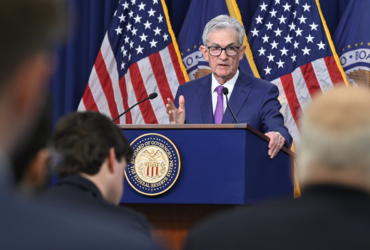Consumer price growth came in hotter than expected to start 2024, according to the Bureau of Labor Statistics.
- M-O-M: The Consumer Price Index for All Urban Consumer rose by 0.3% in January, up from the 0.2% rise in December and the biggest monthly increase since September.
- Y-O-Y: The all items index increased 3.1% when compared to the same time last year, down from 3.4% in December and the lowest level since November.
Coming In Hot. Consumer price growth came in hotter-than-expected as economists projected a 0.2% monthly rise in prices with the annualized rate slowing to 2.9% in January.
Food & Energy. Food prices jumped 0.4% in January the biggest jump since January 2023. Despite the bigger monthly increase, prices did still slow year-over-year to 2.6%, the lowest level since June 2021.
- Energy prices fell 0.9% in January, the fourth straight monthly decline which pushed the year-over-year index down to 4.6%.
Core. The index for all items less food and energy rose 0.4% in January, up from the 0.3% rise in December and the biggest increase since May 2023.
- Y-O-Y: Core consumer prices were up 3.9% when compared to the same time last year, down from 4.0% in December and the lowest level since May 2021.
- Swing & A Miss. Economists thought core prices would rise 0.3% from December and the annualized rate would slow to 3.7%.
Housing Growth. Shelter costs jumped 0.6% from December, up from the 0.4% rise the prior month and the biggest increase since September.
- The year-over-year index did slow to 6.0% despite the big monthly jump and is now at the lowest level since July 2022.
- NOTE: The CPI report noted that shelter costs were the largest factor in the monthly increase in the index for all items less food and energy.
Analysis. Julia Pollak, Chief Economist at Zip Recruiter, noted, as the report did, that much of the blame belongs to housing. “The CPI came in firmer than expected this morning, and not due to some transitory shock but due to a stubborn problem that is arguably the biggest long-term threat to the labor market and inflation: the chronic undersupply of housing. Housing contributed 60% of inflation in Jan.”
- GOLDMAN SACHS pointed to certain price resets that kick in at the beginning of the calendar year, “…largely reflected start-of-year price increases for labor-reliant categories such as medical services, car insurance and repair, and daycare, and we assume inflation in these categories returns to the previous trend on net in February and March ..”
- NICK TIMIRAOS noted that it was a bad for those who had predicted a March cut and those looking for any disinflation in services. “The latest report further muddies the waters over when the central bank might begin lowering rates and could provide ammunition to officials who want to wait until the middle of the year before cutting interest rates.” “Officials who wanted to see signs that disinflation was broadening beyond goods got the opposite of that: goods deflation picked up but services prices accelerated”
BOTTOM LINE: If there was even a sliver of hope for a March rate it is not officially dead.





